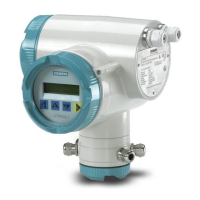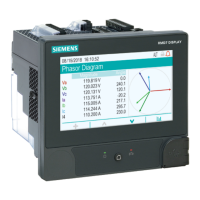Description
3.3 Function
ULTRAMAT 23
Manual, 3/2016, A5E37100388-003
27
generates a pneumatic connection between the upper layer and the lower layers. Negative
feedback from the upper and lower layers leads to an overall narrowing of the spectral
sensitivity band. The volume of the third layer and, therefore, the absorption of the bands,
can be varied using a slide (10), thereby increasing the selectivity of each individual
measurement.
The rotating chopper (5) generates a pulsating flow in the receiver chamber that the
microflow sensor (3) converts into an electrical signal. The microflow sensor consists of two
nickel-plated grids heated to approximately 120 ºC (248 °F), which, along with two
supplementary resistors, form a Wheatstone bridge. The pulsating flow together with the
dense arrangement of the nickel grids causes a change in resistance. This leads to an offset
in the bridge which is proportional to the concentration of sample gas.
Note
Contamination of the analyzer chambers
The sample gases must be fed into the analyzers free of dust. Condensation should also be
prevented in the analyzer chambers Therefore, the use of gas modified for the measuring
task is necessary in most application cases.
, the ambient air of the sensor must not have large concentrations of the
components to be measured.
Electrochemical oxygen measurement
Electrolyte (acetic acid)
3 Thermistor and load resistor for tempera-
6 Oxygen diffusion membrane made of FEP
Figure 3-5 Operating principle of the electrochemical O
2
sensor

